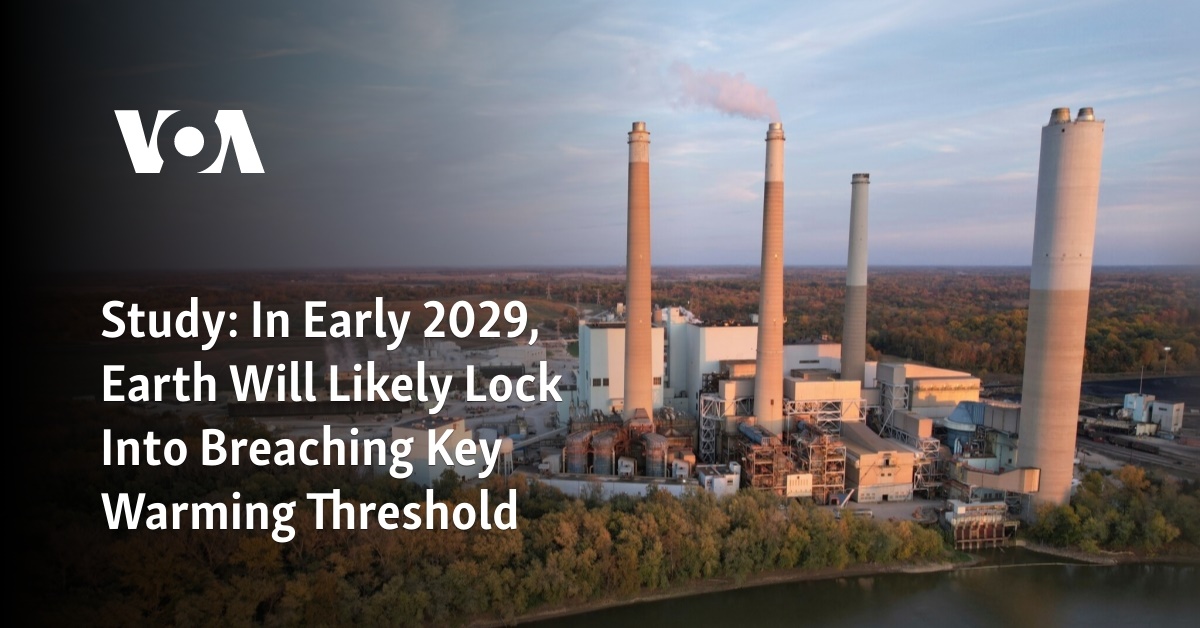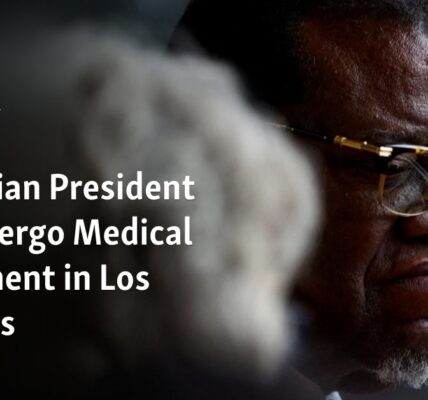Research suggests that in the beginning of 2029, the Earth is expected to reach a critical temperature threshold that will result in irreversible warming.

According to a recent study, if the world maintains its current rate of burning fossil fuels, it will most likely exceed the internationally agreed temperature limit for global warming by early 2029, which is just over five years from now.
The research brings the world three years closer to reaching a critical climate threshold, which is a rise of 1.5 degrees Celsius (2.7 degrees Fahrenheit) since the 1800s.
According to a previous scientific report from the United Nations, beyond a certain rise in temperature, the likelihood of catastrophic events also increases. This includes the potential loss of a significant amount of coral reefs, the potential irreversible melting of a key ice sheet, and a rise in water shortages, heat waves, and deaths caused by extreme weather.
Reaching the threshold will occur earlier than originally predicted due to global efforts to reduce another form of air pollution known as aerosols. These particles, which have a cooling effect on the planet, help conceal the impacts of burning fossil fuels, according to the main researcher of the study. In other words, although reducing aerosol pollution is beneficial, it also leads to slightly quicker increases in temperatures.
A recent report published in the journal Nature Climate Change on Monday has determined the “carbon budget” that remains for the world to consume in order to have a 50% chance of limiting the global temperature increase to 1.5 degrees Celsius since before the Industrial Revolution. This aligns with the goal set by the 2015 Paris agreement.
In the past decade, the average temperature has increased by 1.14 degrees Celsius (2.05 degrees Fahrenheit) compared to the 19th century. Last year’s temperature was 1.26 degrees Celsius (2.27 degrees Fahrenheit) higher, and scientists predict that this year’s temperature will surpass that.
The recent research established a carbon limit of 250 billion metric tons. Currently, the world is emitting just over 40 billion metric tons annually (and this number continues to increase), leaving a six-year timeframe. However, according to the study, this six-year period began in January 2023, meaning there are now only five years and a few months remaining.
According to climate scientist Robin Lamboll from Imperial College of London, it is not certain that the battle against climate change will be lost within six years. However, if we do not currently have a significant decrease in our efforts, it may become too late to strive for the 1.5 degree limit.
In 2021, the United Nations Intergovernmental Panel on Climate Change released a report stating that a budget of 500 billion metric tons should be reached by mid-2032 in order to limit global warming to 1.5 degrees Celsius, according to Lamboll. In June of this year, an update by multiple IPCC authors arrived at the same carbon budget as Lamboll’s team, but Masson-Delmotte, a co-chair of the IPCC report and climate scientist, noted that Lamboll’s analysis is more comprehensive.
The main difference between the 2021 report and current studies is that recent research has revealed greater decreases in aerosol emissions – which originate from wildfires, sea salt spray, volcanoes, and the burning of fossil fuels – which contribute to a smoky atmosphere that slightly cools the Earth, masking the larger impact of greenhouse gases. As efforts are made to reduce carbon emissions, there is also a decrease in cooling aerosols, which has been taken into consideration in the study and in updates to computer simulations, according to Lamboll.
While the carbon budget is projected to be depleted by 2029, this does not necessarily mean that the Earth will immediately experience a 1.5 degree increase in temperature from pre-industrial levels. The actual temperature rise may occur slightly earlier or up to a decade or two later, but it will occur once the budget is exhausted, according to Lamboll.
According to the authors, it is incorrect to interpret reaching the budget for 1.5 degrees as the only opportunity to combat global warming. Their research has determined that the carbon budget, with a 50% probability of limiting warming to 2 degrees Celsius (3.6 degrees Fahrenheit), is equivalent to 1220 billion metric tons, which is approximately 30 years.
According to Christopher Smith, a climate scientist from the University of Leeds and co-author of the study, we do not want this to be seen as a timeframe of six years to rescue the Earth. It is important to note that limiting global warming to 1.6, 1.65, or 1.7 degrees would be significantly better than the previously agreed upon limit of 2 degrees. Therefore, it is crucial that we continue to strive for even the smallest increments in order to combat climate change.
According to Bill Hare, a climate scientist from Climate Action Tracker, which tracks countries’ attempts to lower carbon emissions, surpassing the 1.5 degree threshold does not immediately result in global disaster, but it does mark a crucial turning point that escalates the likelihood of catastrophic alterations.
World leaders remain optimistic about achieving the 1.5-degree limit as they prepare for climate negotiations in Dubai next month. While limiting warming to 1.5 degrees is technically feasible, it poses significant political challenges and may be unlikely to happen.
According to climate scientist Glen Peters from the Norwegian CICERO climate institute, the 1.5C carbon budget has become increasingly insignificant. This research was not conducted by Peters. He compares the current situation to a person about to crash into a wall at high speed, stating that the exact distance from the wall (1 millimeter or 2 millimeters) is irrelevant. The main issue is that we are still moving towards the wrong direction at a high speed.
According to climate scientist Piers Forster from the University of Leeds, individuals should focus on taking action rather than worrying. Forster, who was not involved in Lamboll’s team, stated that taking immediate action can potentially decrease the rate of warming by 50% in the next decade.
Source: voanews.com




